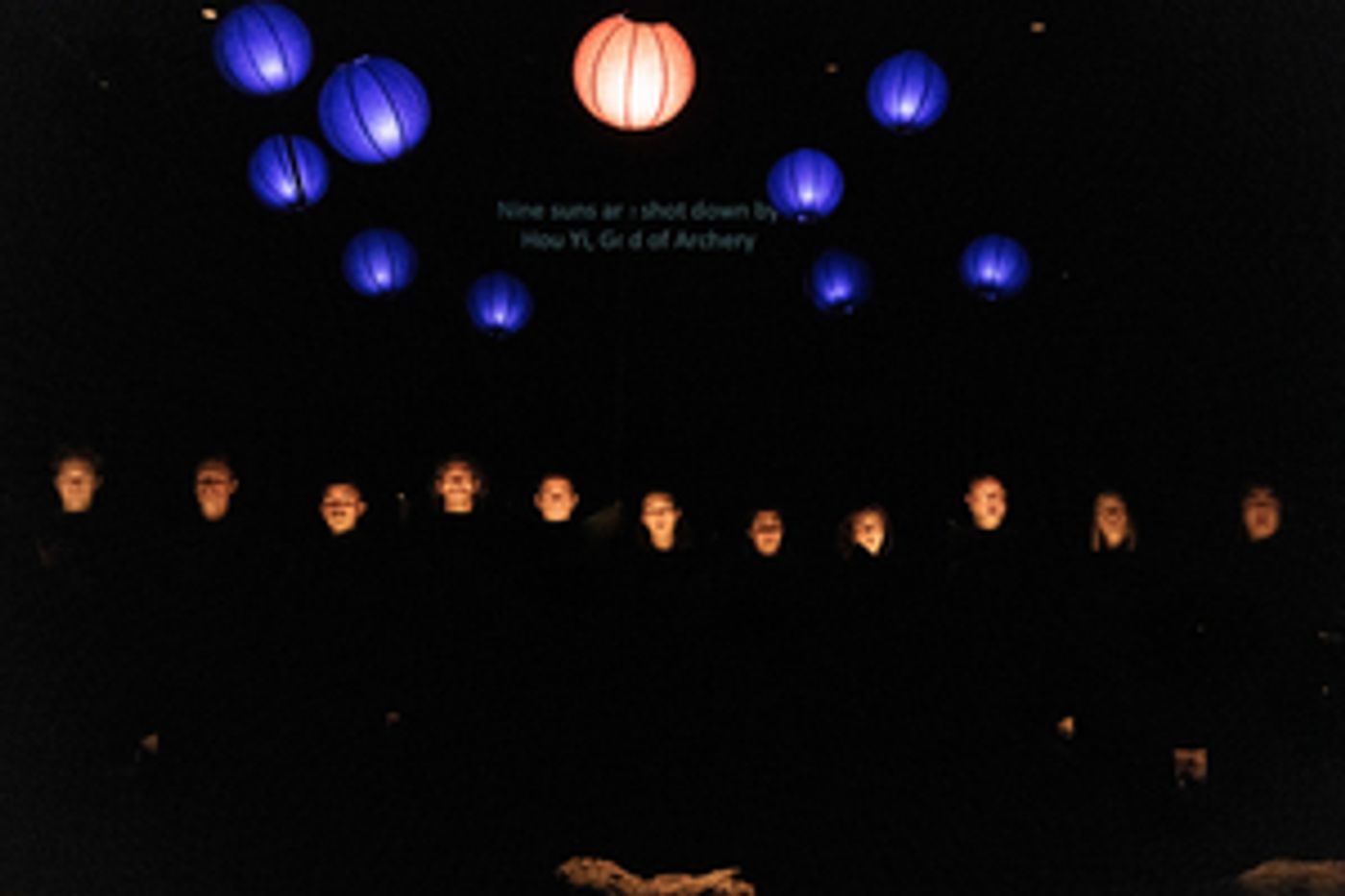Review: Timeless Myths from MOUNTAINS & SEAS Mesmerize St. Ann's Audience
This work of “vocal theatre” is composed and conducted by Huang Ruo, and directed/designed by puppeteer Basil Twist

Photo: Teddy Wolff
Another work salvaged from this year's Covid-aborted Prototype Festival has shown up in New York--at Brooklyn's St. Ann's Warehouse, this time--and it couldn't have been further away from the last I experienced, Taylor Mac's THE HANG, if it tried. BOOK OF MOUNTAINS & SEAS is the work of composer/librettist Huang Ruo (music influenced by Chinese folk melody, Western avant-garde and other styles, but unlike anything else you've heard) and director/designer Basil Twist (a MacArthur "genius grant" winner in 2015).
The four tales included in the piece, which Huang describes as "abstract and eternal," kept the audience in its thrall for 80 minutes. It tells about the relationship between mankind and planet--from the Universe and nature to life, human ambition and fate.

Photo: Teddy Wolff
Perhaps, it is the relation of the myths to the climate change that we must deal with in our current world that brings us closely into the work. Or, perhaps, it is simply that the music and exquisite chanting of the choir of Trinity Wall Street and the repetitive sound of percussionists Michael Murphy and John Ostrowski, that capture our attention in the way that Philip Glass's works do, though with a decidedly different style. Or, perhaps, it is the stylized puppetry of Twist that is so appealing.
Whatever the case, BOOK OF MOUNTAINS & SEAS is a dazzling experience.
While the program for the work was quite modest, only four pages, it was indispensable for bringing us into the myths. For, despite some abbreviated English supertitles flashed on the back wall (with more substantial ones in Mandarin), Huang's libretto is based on original Chinese texts with additional, newly created words that "complete the soundscape and symbolic drama."
The first scene tells of the creation of our planet through the "Legend of Pan Gu," while the next, "Spirit Bird," focuses on the revenge that a princess tries to exact from the water that has drowned her. (Considering the current state of world politics, it is interesting that the program in the section on the "Spirit Bird" asks, "Is weak force always meant to submit and surrender to strong force" and, perhaps more importantly, "Is endless revenge always meaningless?"
The third section tells of "The Ten Suns" that try to cause animals and humans to die until the God of Archery is called upon to control the suns and kills all but one so that it can give light to the Earth, also creating night and day.
Of the work's four segments, I found the last part, "Kua Fu Chasing the Sun," the most compelling, with Kua Fu constructed from rough formed objects that may be driftwood, may be rocks. But with the help of puppeteers, they take life as Kua Fu--a kind of golem figure as in Jewish folklore, completely created from inanimate matter--amorphous, unformed material. As these pieces stunningly become a looming form, it begins chasing after the sun but can't catch it and dies of exteme heat and exhaustion. Dropping his walking stick, it takes root and (unseen by us) grows into forests of peach blossom trees.
BOOK OF MOUNTAINS & SEAS, presented by St. Ann's Warehouse and Beth Morrison Projects, in association with Prototype and Trinity Church Wall Street, will continue at St. Ann's through March 20. See the website for more information.
Reader Reviews
Videos

